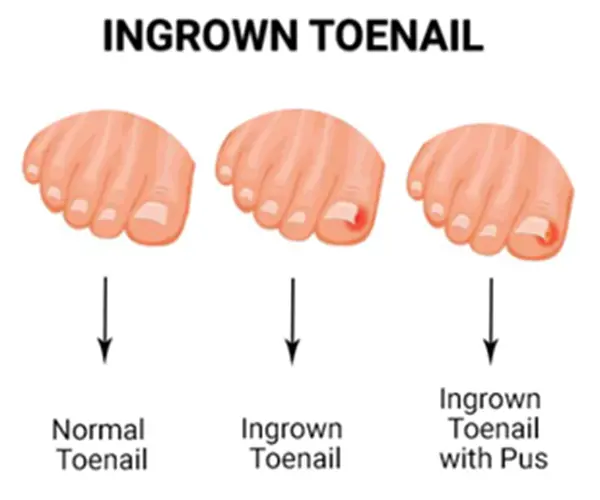Ingrown Nails
Ingrown Toenails
Ingrown toenails, a common and often painful condition, occur when the edges or corners of a toenail grow into the surrounding skin, rather than upward. They can affect any toe but are most frequently found on the big toe. Ingrown toenails typically manifest with notable characteristics such as redness, swelling, and tenderness in the affected area. As the condition progresses, it can lead to the development of an open sore or infection, causing further discomfort. Tight footwear, improper nail trimming, and genetic predisposition are common risk factors. Managing ingrown toenails may involve warm soaks, careful nail trimming, and wearing comfortable footwear. In severe cases, medical intervention, including nail avulsion or antibiotics, may be required to alleviate the pain and prevent complications.

Dr. Ryan M. Sherick is a Fellowship-Trained Foot & Ankle Surgeon experienced in the care of ingrown toenails and proudly provides care to the following areas in California: Thousand Oaks, Westlake Village, Agoura Hills, Malibu, Calabasas, West Hills, Chatsworth, and the entire Conejo Valley, Santa Rosa Valley, and greater Los Angeles area.

Ingrown Toenails Characteristics
Ingrown toenails, also known as onychocryptosis, are a common podiatric condition characterized by the following characteristics:
Request An Appointment
Need Help With Your Foot And Ankle?
